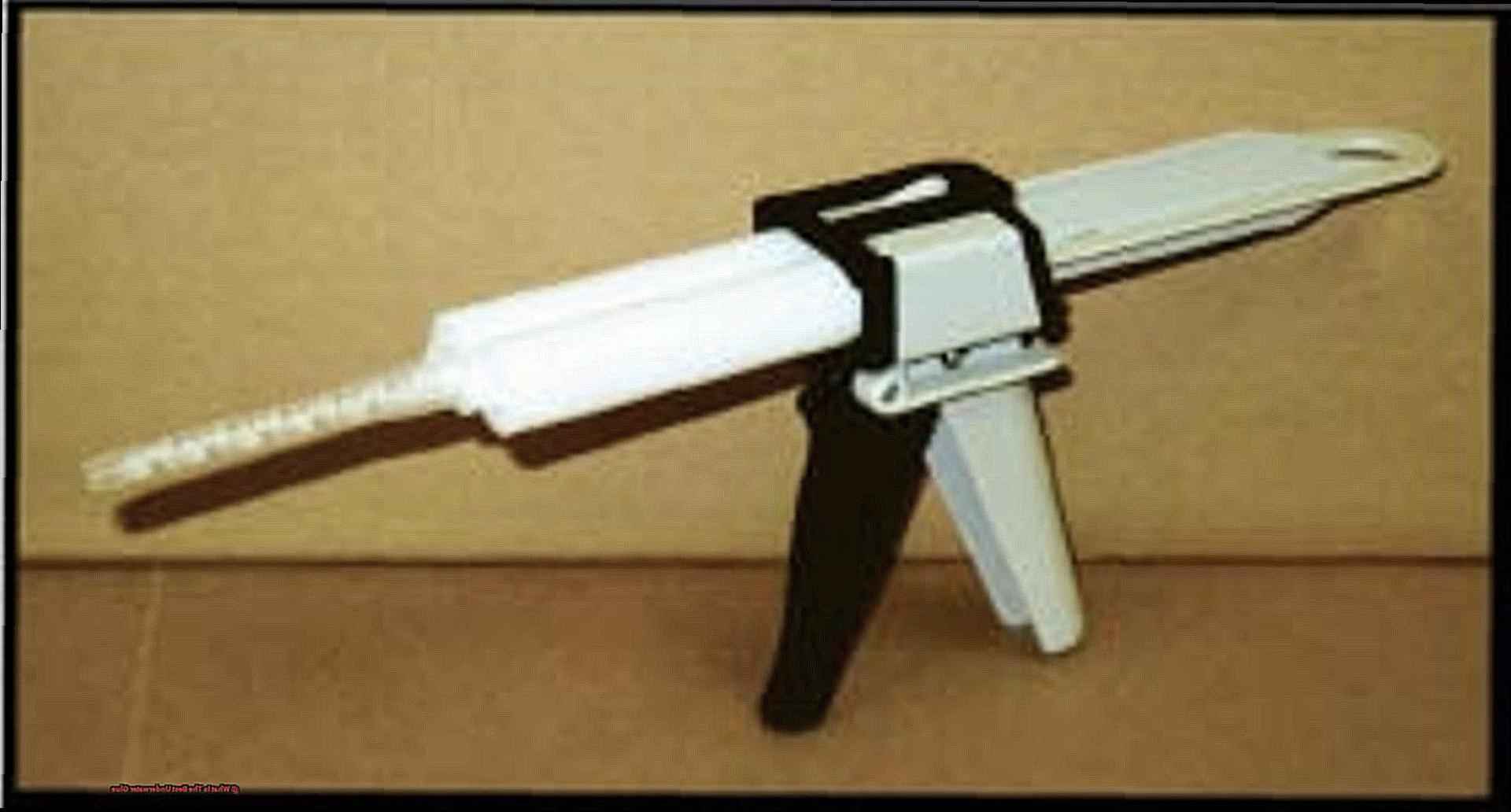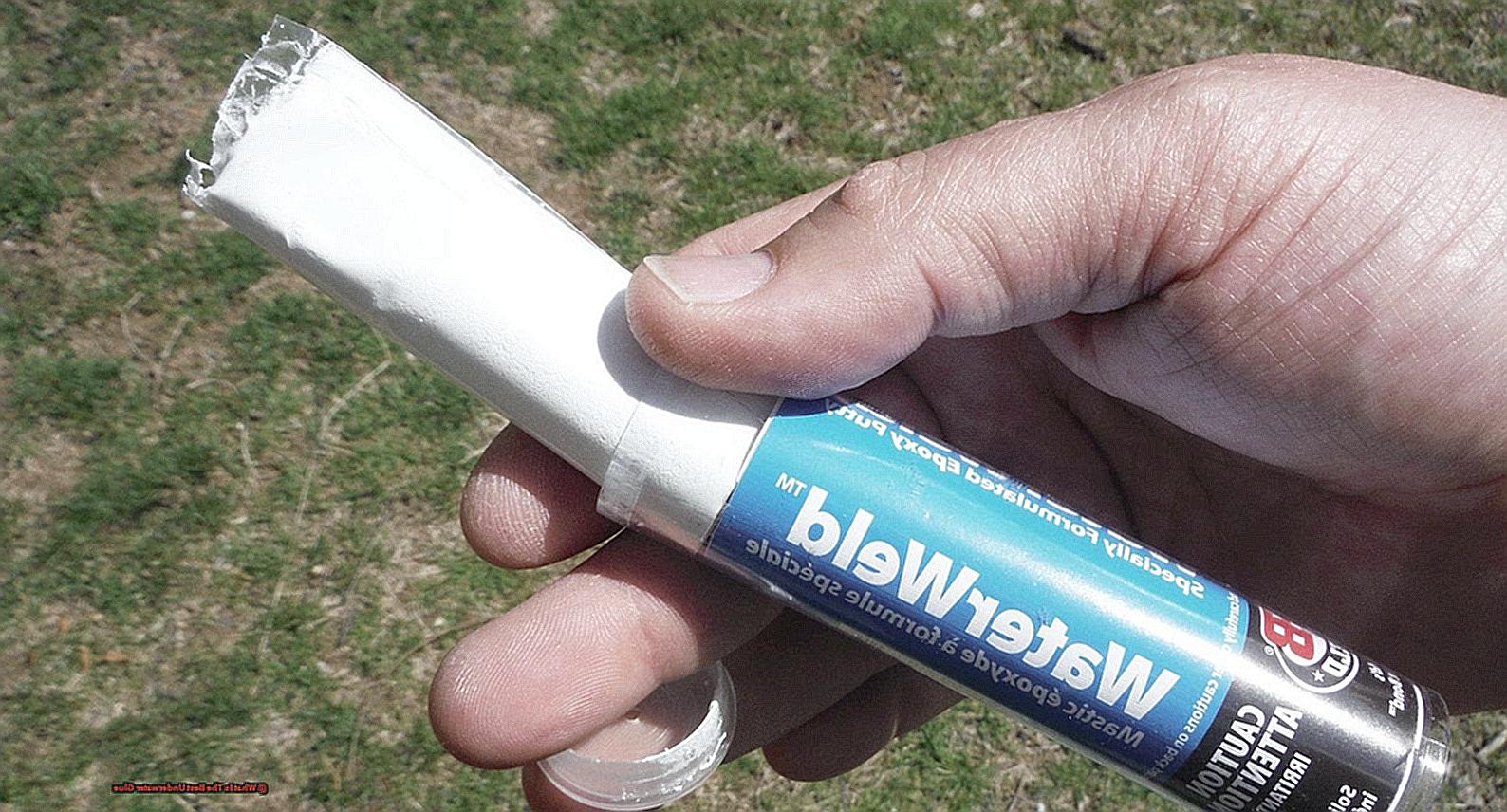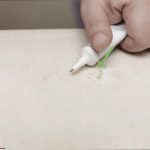Are you tired of constantly replacing broken underwater items? Are you struggling to find a powerful adhesive that can withstand water pressure and humidity? Fear not. You’ve come to the right place. In this blog post, we’re going to dive into the world of underwater glues and reveal the ultimate solution to all your aquatic repair needs.
Whether you’re working on a pool, aquarium, or boat, finding the right adhesive can be overwhelming. With so many factors to consider, such as material type, water pressure, and temperature, it’s easy to get lost in the sea of options. But don’t worry – we’ve got you covered.
We’ll explore the top underwater glues on the market and compare their strengths and weaknesses. From two-part epoxies to silicone sealants, we’ll cover it all. You’ll learn about hard vs. soft adhesives and which are best for bonding plastic or metal. Plus, we’ll discuss which adhesives are safe for use around aquatic life.
So let’s take a deep dive into the world of underwater glues and find the perfect solution for your repair needs.
Types of Underwater Glue
Contents
When it comes to bonding materials underwater, selecting the right adhesive is essential. With several types of underwater glues available, it can be challenging to know which one to choose. In this article, we’ll explore the unique properties of some of the most popular types of underwater glue and their ideal applications.
Epoxy Adhesives: The Heavy-Duty Option
Epoxy adhesives are known for their strength and durability, making them an excellent choice for heavy-duty applications. They consist of two parts – a resin and hardener – that are mixed together before application. Once applied, epoxy adhesives can bond to a variety of surfaces, including metal, plastic, and wood. Their resistance to water, chemicals, and heat makes them ideal for use in underwater environments. Epoxy adhesives are perfect for projects that require long-lasting bonds that can withstand harsh conditions.
Cyanoacrylate Adhesives: The Quick Fix
If you need a quick fix underwater, cyanoacrylate adhesives may be the way to go. These adhesives are known as superglues because they set quickly and can bond to a variety of surfaces. However, they may not be as strong or durable as other types of underwater glue. Cyanoacrylate adhesives are ideal for small projects with minimal stress on the bond.
Polyurethane Adhesives: The Flexible Option
Polyurethane adhesives are known for their flexibility and ability to withstand movement. They can bond to materials such as rubber, plastics, and metals and are ideal for sealing leaks or gaps in underwater structures. They are also resistant to extreme temperatures. Polyurethane adhesives are perfect for projects that require flexibility and a bond that can handle movement.
Silicone Adhesives: The Water-Resistant Sealant
Silicone adhesives are ideal for sealing leaks or cracks in underwater equipment. They are known for their water-resistant properties and can withstand exposure to saltwater. They can bond to a variety of surfaces, including metal, plastic, and glass. Silicone adhesives are perfect for projects that require sealing and preventing leaks.
Natural Adhesives: The Eco-Friendly Choice
For those looking for an eco-friendly option, there are underwater glues made from natural materials such as shellac or casein. These glues are biodegradable and non-toxic, making them a great choice for those concerned about the environmental impact of their adhesive choices. Natural adhesives are ideal for small projects where environmental impact is a concern.
In conclusion, choosing the right underwater glue depends on the specific needs of your project. Consider factors such as the materials being bonded and the conditions under which the glue will be used before making your selection.
Factors to Consider When Selecting the Best Underwater Glue
If you are planning to embark on an underwater project, selecting the best underwater glue is critical to your success. As an expert in this field, I have compiled a list of factors that you should take into consideration to ensure that the glue you choose is effective and long-lasting in its application.
Firstly, it is essential to consider the type of surfaces that will be glued together underwater. The glue should be able to bond with a variety of materials including metal, plastic, rubber, and wood. This will ensure that regardless of the surface materials, the glue will provide a strong and secure bond.
Another crucial factor to consider is the curing time of the glue. Underwater applications can be challenging as they require adequate time for the glue to set and cure properly. The ideal underwater glue should have a quick curing time, allowing for a strong bond to form in as little time as possible.
In addition to the curing time, it is important to consider the strength of the bond that the glue provides. Underwater applications can be subject to extreme pressures and forces, so the glue must be able to withstand these conditions without breaking or becoming weakened over time.
Toxicity is also an essential factor to consider when using underwater glue. It is crucial to choose a product that is safe for marine life and won’t have any negative impacts on the surrounding environment. By selecting a non-toxic adhesive, we can protect our oceans and all marine life.
Lastly, cost is an important factor for many consumers when it comes to choosing the best underwater glue. While it may be tempting to opt for a cheaper product, quality should always come first when it comes to underwater applications. Investing in high-quality underwater glue may cost more initially but will ultimately save you money by preventing costly repairs or replacements in the future.
Two-Part Epoxies
Look no further than two-part epoxies. These specially designed glues consist of a resin and a hardener that, when mixed together, create an incredibly strong bond.
But what makes two-part epoxies stand out from other types of underwater glues? For one, they are highly durable and resistant to water, heat, and chemicals. They can be used on a variety of materials, including metal, plastic, and wood, making them incredibly versatile. In fact, they can even bond both smooth and rough surfaces with ease.
However, it’s important to keep in mind that two-part epoxies can take some time to cure properly. It may be necessary to use clamping or other measures to ensure the strongest bond possible. Additionally, not all two-part epoxies are created equal. When selecting an epoxy for underwater use, make sure to choose one that’s specifically designed for this purpose.
Polyurethane Adhesives
Polyurethane adhesives are the superheroes of the adhesive world, capable of handling even the toughest underwater bonding tasks. As an expert on this topic, I can attest to their versatility and durability, making them a popular choice for various industries.
One of the most significant advantages of polyurethane adhesives is their exceptional bonding strength and ability to work on a variety of substrates. They can bond wood, metal, plastic, and concrete with ease, thanks to their resistance to water, chemicals, and temperature changes.
But what makes polyurethane adhesives stand out is their unique ability to fill gaps and expand. They’re perfect for uneven surfaces or filling voids between substrates, and they cure quickly. Once fully cured, they can be sanded or painted, making them incredibly versatile.
When it comes to underwater bonding, polyurethane adhesives are second to none. They form a robust bond even when submerged in water. For example, they are ideal for repairing boats or sealing swimming pools. However, it’s essential to choose a product explicitly designed for underwater use and follow the manufacturer’s instructions carefully.
To summarize the benefits of polyurethane adhesives:
- Exceptional bonding strength and durability
- Versatility in bonding various substrates
- Resistance to harsh environments such as water, chemicals, and temperature changes
- Unique ability to fill gaps and expand
- Quick curing time
- Ideal for underwater bonding tasks
Cyanoacrylate Adhesives
For those who need an adhesive that can hold up underwater, cyanoacrylate adhesives – also known as super glue – may be the answer. These adhesives are popular for their strong and durable bond, making them a go-to choice for various applications, including underwater bonding.

However, before diving in (pun intended), it’s important to consider a few things. First and foremost, ensure that the adhesive is completely dry before submerging it in water. Any moisture on the surface can cause premature curing and weaken the bond. Additionally, cyanoacrylate adhesives are not recommended for use in saltwater environments, as they can break down over time. With these considerations in mind, let’s take a closer look at why cyanoacrylate adhesives may be the perfect solution for your underwater bonding needs.
- Quick bonding time: One of the most significant benefits of cyanoacrylate adhesives is their quick bonding time. They work by creating a chemical reaction with the moisture in the surrounding environment, causing them to cure and bond quickly. This makes them an excellent option for small repairs or projects that require a fast bond.
- Affordability: Another advantage of cyanoacrylate adhesives is their affordability. Compared to other types of underwater adhesives, cyanoacrylate adhesives are often more cost-effective and readily available.
- Strong and durable bond: As previously mentioned, cyanoacrylate adhesives are known for their strong and durable bond. When used correctly and on the right substrates, they can provide long-lasting results.
When using cyanoacrylate adhesives for underwater bonding, it’s crucial to choose a product specifically designed for this purpose. These adhesives will have a longer curing time and be more resistant to moisture and saltwater environments. Additionally, always follow the manufacturer’s instructions carefully and use proper safety precautions when handling these products.
Strength of the Bond
Firstly, consider the type of adhesive being used. Some adhesives are designed for temporary bonding, while others offer a strong and durable bond. When it comes to underwater bonding, it’s best to choose an adhesive specifically designed for this purpose. This will ensure that your project endures and remains stable even in challenging conditions.
The nature of the materials being bonded is another factor that affects the strength of the bond. Different materials have unique surface properties, which may make them more difficult to bond than others. For example, non-porous materials like glass and metal require a different adhesive compared to porous materials like wood or fabric. It’s important to select an adhesive that is compatible with your materials.
Lastly, environmental conditions play a significant role in determining bond strength. Underwater glues are designed to work in wet and damp environments, but water can affect their performance. For optimal bonding strength, some adhesives may require specific conditions such as a certain temperature or drying time.
Environment Factors to Consider
When it comes to underwater bonding, choosing the right adhesive can mean the difference between success and failure. However, before you make your final decision, it is essential to consider the environmental factors that could impact the bond strength of your underwater glue.
One of the most critical factors to consider is water temperature. Different adhesives work better in different temperatures. Some may function better in colder waters, while others require warmer temperatures to activate their bonding properties. Therefore, it’s crucial to read the instructions carefully and select an adhesive that is suitable for the water temperature you’ll be working in.
Surface type is another vital factor to consider. Different underwater surfaces may require different types of adhesive to achieve a strong and lasting bond. For example, if you’re bonding two metal surfaces underwater, you may need a specialized underwater glue designed specifically for bonding metals in submerged environments.
Water pressure is also an essential environmental factor to consider when selecting an underwater glue. The pressure at different depths can vary greatly, and some adhesives may not withstand the pressure at deeper depths. So, if you plan on using an underwater glue at significant depths, it’s essential to choose one that is specifically designed for deep water use.
Lastly, it’s crucial to consider any potential environmental hazards present in the water where you will be using the glue. Chemicals, pollutants, and other contaminants can all negatively impact the performance of an underwater glue as well as pose risks to marine life and ecosystems. Thus, always look for products that are environmentally friendly and safe for use in aquatic environments.
The Best Underwater Glue for Your Project
Firstly, it’s important to consider the materials you’ll be bonding, the water conditions, and your application method. Two-part epoxy is a top choice for its strength and durability, making it ideal for projects that require a strong bond. This adhesive is also resistant to water and chemicals, making it perfect for harsh underwater environments.
If you’re in need of a fast-acting adhesive for small repairs, then cyanoacrylate glue, or super glue, may be your best bet. However, it may not be suitable for larger or more complex projects.
For projects that require flexibility and movement, such as sealing a leak in a pool or aquarium, silicone adhesive is an excellent choice. It maintains its elasticity in wet environments, ensuring a watertight seal.
It’s important to note that not all adhesives are safe for use underwater. Always check the manufacturer’s instructions and recommendations before using any adhesive in an aquatic environment. Additionally, ensure surfaces are thoroughly cleaned and dried before applying any adhesive.
Also Read: Is Gorilla Super Glue Waterproof?
Conclusion
After considering factors such as materials, water conditions, and application method, you can confidently choose the best underwater glue for your project. Two-part epoxies are the go-to option for their strength and durability in harsh aquatic environments. Need a fast-acting adhesive for small repairs? Cyanoacrylate glue is your answer. For projects requiring flexibility and movement, silicone adhesive is perfect.
It’s crucial to note that not all adhesives are safe for use underwater. Always refer to the manufacturer’s instructions before using any adhesive in an aquatic environment. Additionally, ensure surfaces are clean and dry before applying any adhesive.
Environmental factors such as water temperature, surface type, water pressure, and potential environmental hazards should also be considered when selecting an underwater glue. By doing so, you can guarantee that your project remains stable even in challenging conditions.
Investing in high-quality underwater glue may cost more initially but will ultimately save you money by preventing costly repairs or replacements in the future.






